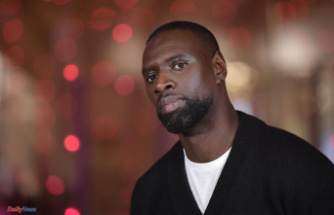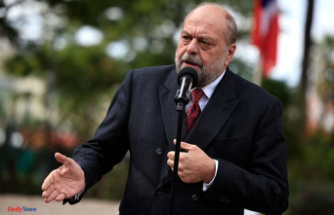A lack of exercise and cool temperatures often lead to back pain in autumn. An expert reveals what those affected can do about it and when a doctor's visit is due.
Many often complain about aching joints and body regions during the cold season. Back pain also occurs more often than usual in autumn. In addition to cooler temperatures, this can also be due to the "lack of exercise", as private lecturer Dr. medical David-Christopher Kubosch, senior orthopedist and spinal surgeon at the Gundelfingen joint clinic, reveals. In the interview, he has the most important tips ready on how we can combat back problems in autumn.
Why is back pain more common in autumn?
dr medical David-Christopher Kubosch: If the weather becomes more uncomfortable, many people lose interest in being outside. But if you just lounge around on the couch for hours, you hardly recover. On the contrary: the monotony hits the soul, back and abdominal muscles atrophy, neck and shoulders become tense. In addition to the lack of exercise, the cool, damp weather combined with the high humidity also promotes pain in the back and muscles. Because the cold causes an increased basic muscle tone - basically the muscles "tremble" constantly and cause pain.
In which areas can there still be similar complaints in the fall?
Wetness and humidity in autumn are often quite a problem for arthrosis patients in particular. There is often a severe flare-up of pain in the hips, knees and other joints. The cause is probably the "shut down" metabolism on cool autumn and winter days. The resulting poorer blood circulation leads to increased friction pain in the joints. Nevertheless, it is fatal to insert the overdrive. Since the articular cartilage has no blood vessels, it can only be supplied with important nutrients and thus kept alive by regular movement via the synovial fluid.
When is a visit to the doctor necessary?
In 90 percent of all cases, back pain is harmless and goes away on its own. However, if the symptoms persist for several weeks, medical help is required: The "National Care Guideline for Lower Back Pain" advises that the X-ray should be waited for six weeks. But of course this only applies if the doctor assumes "non-specific back pain" (which is the case in 80 percent of all patients). In addition, no alarm signals may occur, such as numbness or signs of paralysis in the arms or legs. In these cases, immediate specialist medical attention by an orthopedist is required. In the case of less restrictive complaints, the general practitioner is a good medical point of contact and coordination. If necessary, he will refer you to an orthopedist.
Even if the symptoms are less pronounced, successful treatment by a specialist as soon as possible is highly recommended. Because: Patients with back pain often have a longer history of therapy - up to several years. Meanwhile, many of those affected do not experience any significant improvement in their symptoms, initially acute back pain threatens to become chronic over time - with often drastic consequences: in addition to diseases of the cardiovascular system, chronic back pain is the most common reason for partial or complete disability and early retirement.
What can sufferers do to relieve the pain themselves?
Heat applications are an effective first-aid measure for back pain - preferably on the first few days of the symptoms. Whether it's a modern electric blanket or a good old hot-water bottle - the common methods hardly differ in their mode of action. Alkaline baths or wraps are particularly beneficial on dreary days when the neck, back or shoulders hurt: the heat loosens the tissue, the alkaline salts neutralize the acid in the connective tissue - one of the main triggers for chronic pain.
Stress management and relaxation exercises generally help to take things a little easier and protect the vegetative nervous system. The best way to find out how to cope with everyday life in a way that is easier on the back and how to properly train muscles is to go to a back school. Health insurance often covers the cost of this.
How to prevent back pain in autumn?
Sufficient exercise is also important on rainy or stormy days - and preferably in the fresh air. Jogging, for example, is also great on autumnal days. Because continuous running protects against impending muscle tension, especially in the cooler seasons, supplies the intervertebral discs with vital nutrients and strengthens the trunk muscles. In addition, the immune system is promoted, happiness hormones are released and the risk of catching a cold is reduced. Intensive warm-up training with coordination exercises, shoulder circles, etc. is particularly important in autumn and winter. This prevents strains or damage to the joints.
If you don't want to be active outside, you can also do this at home or in the office (and, for example, prefer the stairs to the elevator more often). In order to protect the spine from damage and premature (painful) wear and tear, regular back exercises from time to time, such as the “cat hump”, also help. To do this, please get on all fours and bend your spine upwards. Your back is now straight and you are looking down. Now round your back as much as possible and let your head hang loosely. Repeat the entire exercise ten times, making sure to use moderate force and smooth movements.
The following exercise is even less complicated, but still efficient: Stretch your left and right arm alternately as far up as you would when picking apples. 20 or 30 seconds is enough to stretch your spine and relax your neck and back muscles.
Privatdozent Dr. medical David-Christopher Kubosch is a specialist in orthopedics and trauma surgery at the Gundelfingen Joint Clinic. The spine surgeon, who is certified by the German Spine Society, is also a lecturer at the University Hospital in Freiburg. He also oversees several research projects there. His main areas of treatment are spinal surgery, intervertebral disc surgery and prostheses.












